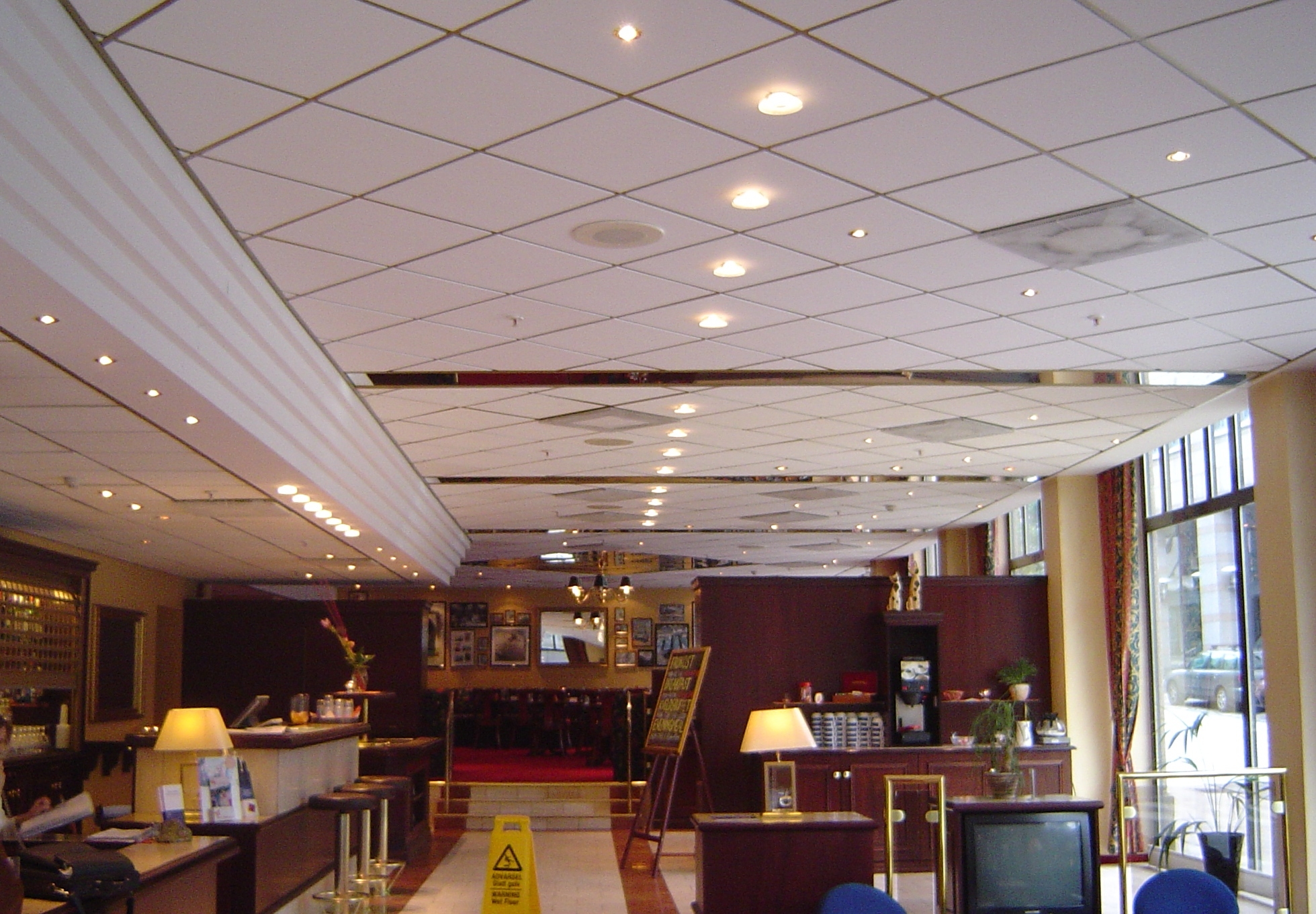
Gypsum Ceiling Tiles Designs - What do you need to know about acoustic ceiling tiles as far as why they're popular and the things they are? Acoustic ceiling tiles had been heard of by me but had never bothered to ask the things they were until I began looking at installing a ceiling in my own cellar. I didn't know what they were, but with a little research, I was able to find out a lot about acoustic ceiling tiles. Here is some of what I picked up. Have a look so you will understand the things they are and whether they could be right for you and also your ceiling scenario.
Interior designers who wanted to locate a way to lower ceilings in a room while deadening the sound originally developed acoustic ceiling tiles. With acoustic ceiling tiles, a grid of metal strips is suspended in the room's real first ceiling. Each one of the sound-absorbing acoustic ceiling tiles is dropped into the sections made by the grid. Along with deadening sound the ceilings, also can conceal wires, unsightly fixtures, and conduits which will be along the ceiling of basements and old buildings.
Should they get wet, they stain and also the pooling water on top can make them fall unexpectedly. In addition, acoustic ceiling tiles look terrible when they stain and must be bleached to get their original look back. Acoustic ceiling tiles can be used to fix up a room fast. You are able to avoid doing a great deal of construction by simply hanging a grid from a ceiling that is awful appearing and hanging some acoustic ceiling tiles.
For your ceiling wants, just you will be able to tell should you need acoustic ceiling tiles. In the event that you prefer to cut back on sound between floors of your home or company without spending a great deal of money on the renovation, consider them, though. Acoustic ceiling tiles are easy to replace, economical to maintain, and allows one to paint the ceiling to coincide with the remaining part of the area.
Related Post "Gypsum Ceiling Tiles Designs"